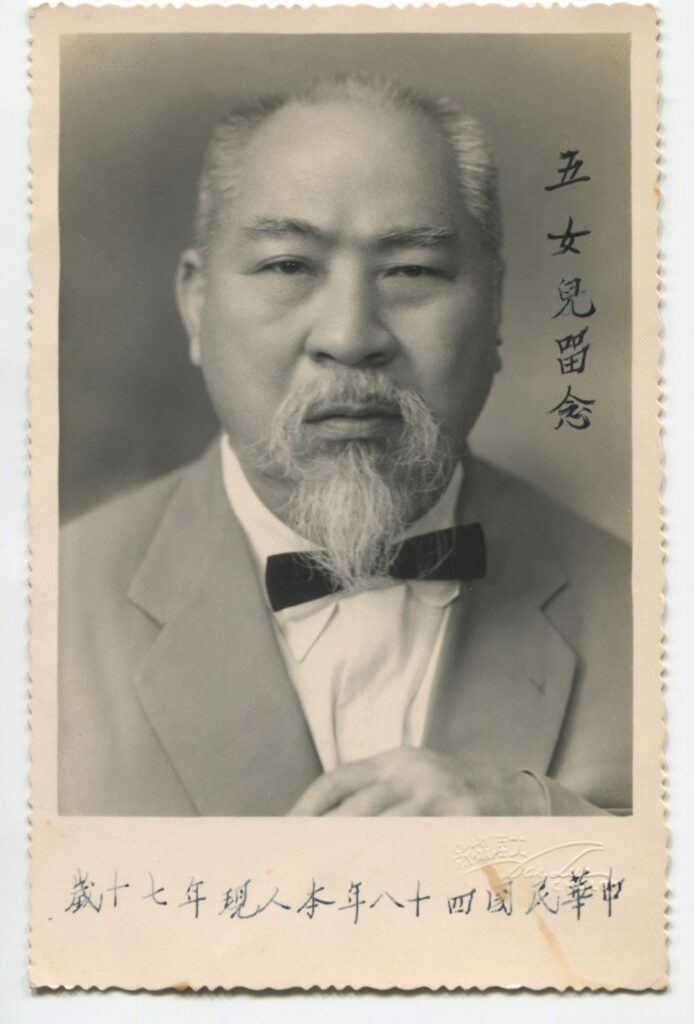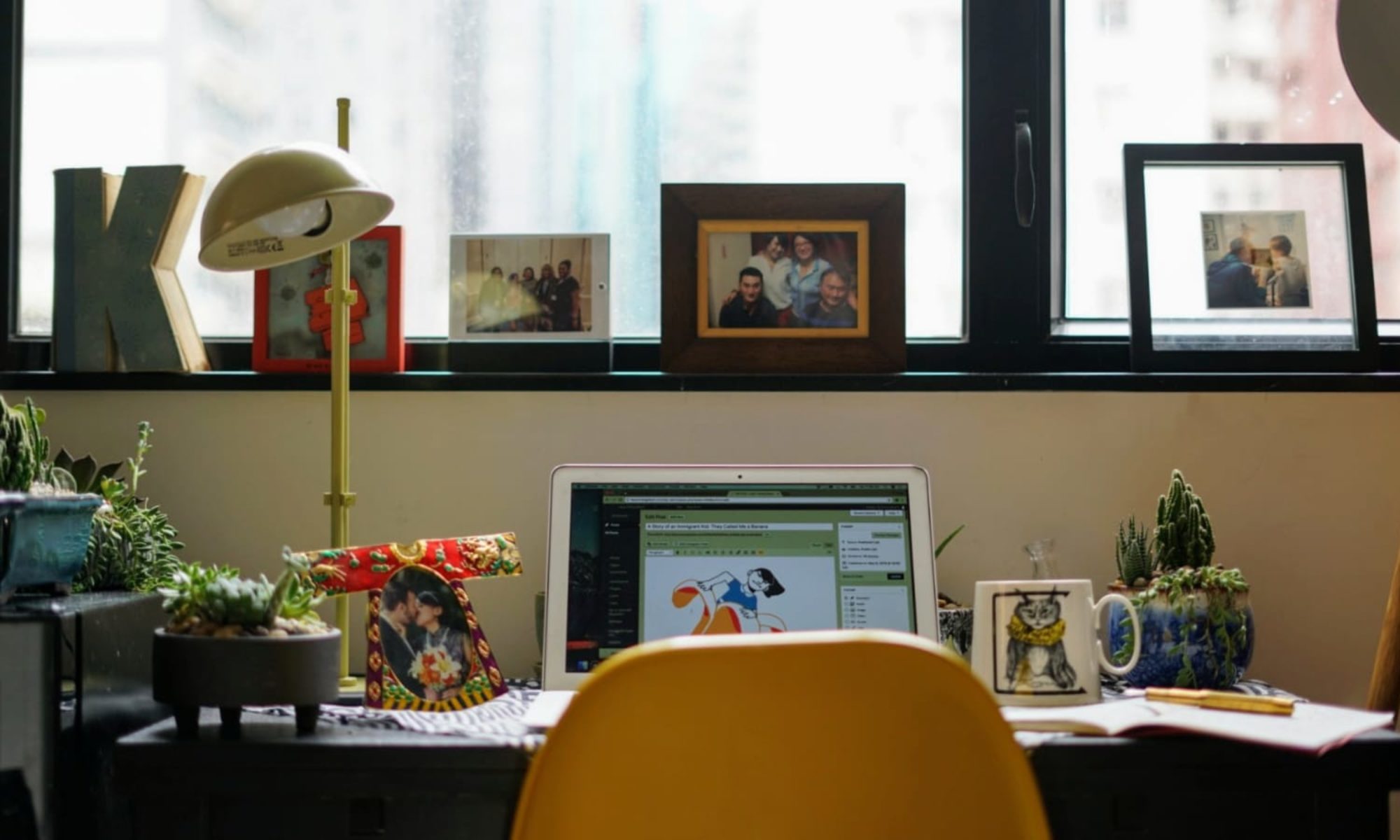
“Hey! That’s Chiang Kai-shek!” Wei-chen exclaimed.
“You’re right!” I inspected the black and white photograph. “What the hell is he doing in my Ama’s photos?”
Wei-chen is a Taichung-based photographer who I have befriended this year. After several hang-out sessions, we figured out our families are connected by marriage, which makes us distant relatives. We were excited and started a quest to understand our families and ancestry better. Since I am living in my paternal grandmother’s house in Taichung, we began our research with Ama’s archives and belongings.
How many people have a picture of the infamous Generalissimo in their family’s archive? I had no idea why we had this picture. I showed my father the photograph and asked him why Ama had a picture of Chiang Kai-shek in her possession.
It turns out that the man on the very far left was my Granduncle, my Ama’s oldest brother. He, like his father, was also a successful Chinese medicine merchant. He was an overseas Chinese merchant in Vietnam, and I supposed he donated to the Kuomintang (KMT). I guess this is why he had the “honour” of having his picture taken with the leader of the party and the then-president of Taiwan.
I was shocked. I had no idea that we had family members who supported the KMT. Both my parents and I are supporters of the Democratic Progressive Party (DPP), which advocates human rights and promotes Taiwanese nationalism and identity.
“What about Ama?” I asked.
“Ama supported the KMT,” my father said.
“Why? They killed thousands of people during the 228 Incident and tens and thousands more during the White Terror!”
“Well, your Ama thought the KMT people are decorous and cultured,” my father said.
“But they were terrorits!”
“Ama didn’t think so. She admired Soong Mei-ling,” my father said, his attention already drifted toward the television.
Soong Mei-ling was Chiang Kai-shek’s third wife. Chiang was technically still married when he pursued her. Besides partnering with a much older man who was already married, my Ama and Soong Mei-ling didn’t seem to have much in common. I looked up Soong to figure out why Ama had admired her. In the 1937, Soong and Chiang Kai-Shek shared the hounour of Time‘s Man and Woman of the Year. By 1943, Soong had appeared on the cover of Time three times, and she was the first Chinese national and the second woman to address both houses of the U.S. Congress. Perhaps Ama idolized Soong because she was elegant and eloquent, well dressed and spoke English fluently. She also helped her husband promote his image and built relationships in the U.S.
While I was wondering about why Ama was a fan of the KMT, it occurred to me that I didn’t know my grandmother at all. I didn’t know who she looked up to and why. I didn’t know which political party she supported. I didn’t even know her favourite food, colour, or books. All my life, I just knew her as my Ama, my paternal grandmother. But who was she as a woman of her time?

Since September 2021, I’ve moved back to Taiwan and into Ama’s house in Taichung. Ama is now ninety-four years old and in poor health; her house requires repairs. While my husband Derek began the repairs, I started organizing her belongings and archives. As a result, I’ve found a wealth of information, from black and white photographs to half a century old, onion paper thin documents.
I have so many questions. However, Ama is no longer verbal, so she can’t answer my questions. As a result, I can only make educated guesses about her life based on the information in her archive and photos. I’ve also been reaching out to relatives and associates who had known her.
Wu Qiao Qing (born 1928) was the fifth daughter of Mr. Wu Fu-ke and Mrs. Wu Zhan Zu. Ama came into the world at the height of Japanese colonialism to a Chinese father from Chaozhou, Guangdong province. He is the only one of my great grandparents who wasn’t born in Taiwan.

I learned a bit about my Great Grandfather, Wu Fu-ke, from my Grandaunt, Ama’s youngest sister—she is the eighth and youngest daughter born from my Great Grandfather’s second wife. She said that my Great Grandfather came to Taiwan as a youth probably around the early 1900’s or 1910’s— I haven’t found any records about when he arrived. According to my Grandaunt, Fu-ke’s family had means but a fortune teller claimed that he would curse his parents. So, his family sent the young man away. My Great Grandfather didn’t have any means to support himself when he first came to Taiwan. One day, a cousin of his, a Chinese medicine merchant who also hailed from Chaozhou, gave him some second rate ginseng for him to sell. This was how my Great Grandfather started his career as a Chinese medicine merchant.
He eventually left Taiwan and moved to Vietnam for better opportunities. He left Ama and two other daughters in Taiwan and took his wife and the rest of the children to his new home. In Vietnam, he became prosperous.

Fu-ke eventually returned to Taiwan sometime in the 1940s, when Japanese colonialism ended, and the Kuomintang retreated to Taiwan after losing the Chinese civil war. He eventually died in Taichung, Taiwan, before I was born.
The photographs of my Granduncle and my Great Grandfather are only the beginning of my quest to understand my Ama as a woman in the context of Taiwanese history. Through this project, I want to understand Ama as a person and, simultaneously, learn about Taiwan— my ancestral homeland that, until last year, I had only lived from the ages of six to ten.
Wei-chen and I have been uncovering her belongings and documenting them through text and photographs. We will be working together on a book. He will be in charge of the visual element of this project and creating new images to complement my family history.
This is the first post of a series called “You Can Have it When You Grow Up.” It’s where I will document my process and research in learning about my Ama, Taiwan, and myself.


Love this first post, Kayo. Keep the posts coming. I want to know your Ama better, too.